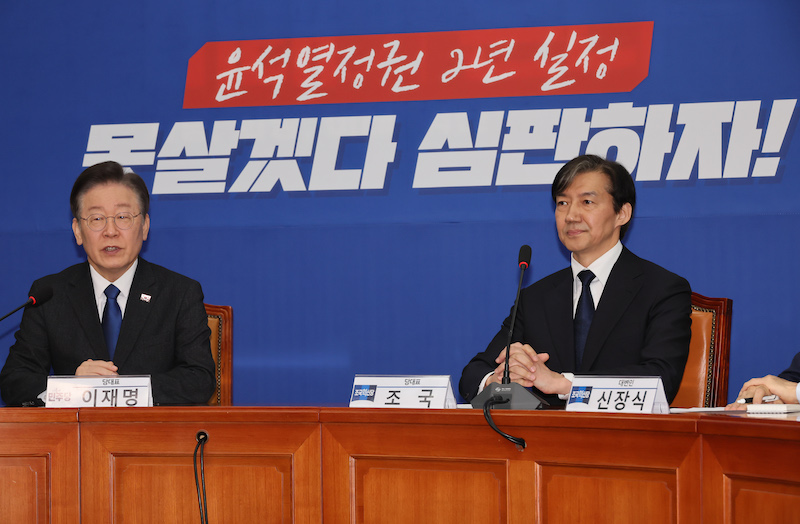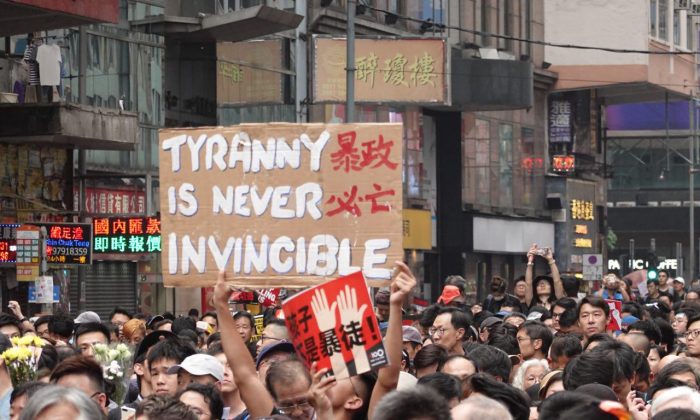중국의 일국양제 적용도시인 홍콩이 지금 전 세계의 주목을 받고 있다. 중국의 전체주의에 반대하는 홍콩 시위 참가자들은 경찰의 과잉 무력 진압에도 아랑곳하지 않고 있다. 이번 시위는 30년 전 중국 톈안먼 광장에서 벌어졌던 대학살 사건을 떠올리게 한다. 민주화를 부르짖는 비무장 시위대에 또한번 무자비한 유혈탄압이 가해질 것인가.
중국은 세계 제2위의 경제대국으로 성장했지만 공산당의 본질은 변하지 않았다. 오히려 더 파괴적인 독재국가가 되어 주변국들을 위협하고 있다. 다행히 도널드 트럼프 대통령은 과거 대통령들과 달리, 중국을 지정학적 경제적 적국으로 간주한다.
세계는 지금 자유와 권리를 주장하는 비폭력 시위자들을 무자비하게 진압하는 중국공산당의 민낯을 보면서 ‘일국양제’가 거짓말임을 알아차리고 있다. 중국공산당은 딜레마에 처해 있다. 세계금융의 중심지인 홍콩을 해치지 않으면서 자유를 억압해 통제 아래 두고 싶어 한다.
만약, 시진핑이 톈안먼 광장 사태처럼 홍콩 시위자들을 무력으로 진압한다면, 허울 좋은 승리만 남게 될 것이다.
In continuing the protest against Beijing’s totalitarian plans, protesters in Hong Kong are doing the people of their city, as well as Macau, mainland China, and really, the world, an enormous service.
The tiny territory that’s part of China’s “one country, two systems” policy is showing the world what courage looks like, in the face of the Chinese communist dictatorship.
And the world is not only taking note of Hong Kong’s plight, but also taking a close look at what the Beijing regime is doing through proxies, or threatening to do itself. Hong Kong has come to symbolize freedom in a region that has become dominated by China’s financial bullying and military threats.
In an earlier article, we explored the possibility of the Hong Kong protests ending in a way similar to that of the Tiananmen Square massacre. But Hong Kong’s outcome remains to be seen. Regardless, the symbolic importance of the city is undeniable. The risks that these protesters are taking today is no less than those taken by pro-democracy protesters 30 years ago in Tiananmen Square.
Learning From the Past
Recall that in the spring of 1989, one nameless man—forever known to the world as “Tank Man”—blocked the path of tanks exiting Tiananmen Square in the aftermath of the massacre of thousands of students by the Chinese Communist Party (CCP). Those students were demonstrating against the corruption of the CCP and for the establishment of democracy in China.
The Hong Kong protesters of today are trying to prevent the rights and freedoms they have from being taken away.
The Tiananmen Massacre was a stark demonstration of both the evil legacy of the CCP and its evil future, as well as the inhumane nature of those who lead it. The valiant but obscure Tank Man became a symbol of defiance and moral courage in the face of the overwhelmingly evil forces of tyranny that were brought against him and his country by the CCP.
While Much Has Changed, Much Hasn’t
Thirty years later, much has changed in China, but also, much hasn’t. In 1989, China was a weak but growing nation, benefiting from vast amounts of capital and technological investment from the West.
Despite the massacre at Tiananmen Square, the United States did everything it could to preserve the U.S.–China relationship and help China progress in its economic development. Former U.S. President George H.W. Bush even wrote former CCP leader Deng Xiaoping a personal letter to that end.
The expectation was that more political openness would come with economic development, and Western investment would fuel China’s growing wealth and power over the next three decades.
Today, one can see the naivete of thinking that the CCP would mellow as China grew wealthier.
China is a rich nation, with the second-largest economy in the world, but the CCP’s essential nature hasn’t changed. China’s development has only allowed it to become even more oppressive and tyrannical toward its people. And, as the world is now learning, under the rule of the CCP, China has become a much more dangerous and destructive force, not only against its neighbors, but around the world, too.
Standing Up to China
Fortunately, unlike in 1989, America’s attitude toward China has changed. With President Donald Trump in office, China faces a much different America. Unlike past presidents, this one sees China for the geopolitical and economic adversary that it truly is, not for what he’d like it to be.
Trump’s policies are clearly and unmistakably intended to thwart China’s goal of replacing the United States as the global leader. For example, the trade war is a response to China’s adversarial trade practices and theft of U.S. technology. Banning Huawei and other firms is to stop the spread of spyware technology in the country. And expanding U.S. military aid to Taiwan is a direct response to China’s plan to take it over as early as 2020, even by force if necessary.
Hong Kong Now the Symbol of Resistance
Even though Taiwan is at the top of Xi’s agenda, Hong Kong is now the primary symbol of resistance to Chinese expansionism. The world sees its very visible and nonviolent marches as they happen—just as they’re witnessing the violent responses by CCP proxy forces. The dangers that come with reunification and the falsity of the “one country, two systems” narrative are no longer theoretical abstractions; they’re real.
But just as importantly, Xi’s relatively moderate response to the demonstrations against his rule and the CCP exposes China’s deep financial vulnerability. Xi knows that China needs Hong Kong intact in all respects; its stellar global reputation as one of the most important financial centers in the world is irreplaceable.
China’s dilemma, therefore, is how to strip Hong Kong of its freedoms and bring it squarely under the heel of the CCP, without losing the benefits of Hong Kong’s critical economic and financial clout. It’s in this very global, confrontational, and high-stakes struggle that the Hong Kong protests have come to symbolize much more than when they began.
If Xi orders the People’s Liberation Army to do to Hong Kong what it did at Tiananmen Square, he will certainly have “won” Hong Kong, but will have lost much more.
James Gorrie is a writer based in Texas. He is the author of “The China Crisis.”
*이 기사는 저자의 견해를 나타내며 에포크타임스의 편집 방향성과 일치하지 않을 수도 있습니다.


![[칼럼] 부산 ‘소녀상’에 비닐봉지 씌운 남성, 처벌할 수 있을까](https://kr.theepochtimes.com/assets/uploads/2024/04/MYH20240413005600641_P4.jpg)


![트럼프를 ‘악당’으로 만들다…악의적 프레임의 수혜자는 누구? [ATL]](https://kr.theepochtimes.com/assets/uploads/2024/04/rrrr-235x132.jpg)
